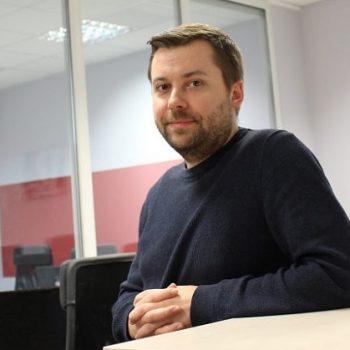There are no bad ideas, there are only ideas that don’t fit in – “Design Thinking in Practice” workshop overview

A research approach to problem-solving, customer focus, and the ability to understand the needs of the end-user are the competencies of the future that can determine whether to gain or lose a competitive advantage. Thinking about people and their expectations is particularly important in the IT industry, which is subject to dynamic change, as its representatives are well aware, facing the need to expand knowledge and acquire new skills constantly.
Last week, the Marketing team participated in the “Design Thinking in Practice” training, led by Bartosz Śmietański, a communications specialist, business, and public relations coach at Media Trener. We received a massive dose of knowledge about the business methodology of lean thinking. We got to know the foundations of design thinking and seven steps to understand the user and the designer, which allows us to avoid problems that may arise during work in interdisciplinary teams. During the day-long workshop, we also discussed whether design thinkers would eliminate the need to hire sales representatives. Of course, this is only a nutshell of a few hours’ intensive meeting.
“Can we improve the wheel?
It started with a disaster. Four planes crashed in different parts of the world. The survivors, using cards and markers found here and there, tried to illustrate objects thrown ashore by the waves. This is how the first part of the training in design thinking began – integration.
Our team, consisting of representatives of Apollogic, Tinssen and Q&A, got together quickly. Fortunately, because the training went at a high pace: with a stopwatch in one hand and a marker in the other. In eight intense hours, we ran from defining the design assumptions to creating the staff, to designing the product and even the business process in which it is embedded.
But what is design thinking? It’s a way out of your needs. It’s a meeting of an interdisciplinary team. It’s to write down the stages of designer’s thinking in such a way as to be able to invite people from outside the design industry to join it.
Imagine that your team gets the task to come up with a better circle. You can look for lighter materials, maybe you can optimize the sections. In design thinking, you start a process that will lead to the question if you definitely need a wheel.
Is this the ideal approach? No, it’s not. It can be time-consuming. It can marginalize expert knowledge. In return, it is incredibly creative and allows for unprecedented results.
Because maybe the wing will be better instead? Even if once in a while, as part of the training, the waves throw planes ashore”.
Marek Mazij, Senior Graphic Designer
“I found the design thinking workshop an extremely creative and developmental meeting. What I like most is the fact that the idea of design thinking is very precise segregation of creative stages, which can be used in literally every area of life, not only during product development.
My feeling for philosophy in design and lean thinking is that someone has brought the great mission of creative/business processes together and intensified it by giving order and order to achieve a perfect balance. To sum up, I would call it a great way to organize and be effective with thought and physical creativity resources.
I rate the workshop itself on 9/10. The only thing I missed was a little more theory. If I had studied the idea of design and lean thinking more deeply, I think it would have been easier for me to do self-correction and ask myself questions in advance during the practical part”.
Emilia Łach, Webmaster
The concept of design thinking, through its universal character and wide range of use, can improve the work of teams looking for innovations and unconventional methods of solving problems – regardless of whether it’s a team consisting of representatives of an international corporation, micro-business, foundation, school or administration.
- On 13/03/2020







0 Comments